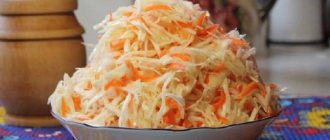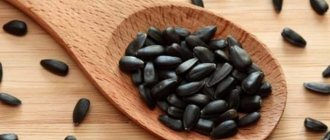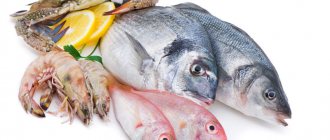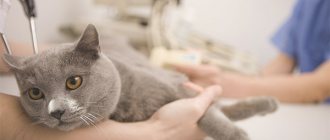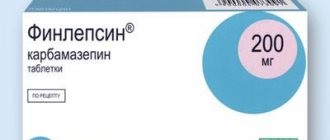Cabbage is the most important agricultural crop, a plant of the Cruciferous family. It is grown everywhere except in regions with extreme climatic conditions. Garden cabbage has many subspecies, each of which has a wide variety of varieties: cabbage, cauliflower, Brussels sprouts, Portuguese, Savoy, kohlrabi, broccoli, kale, etc. Despite the fact that cabbage subspecies differ in the amount and ratio of chemicals and microelements , their composition is similar: carbohydrates, fats, mineral salts, fiber, enzymes, phytoncides, vitamins A, B1, B6, C, P, K and others.
Source: depositphotos.com
Cabbage is eaten both raw and processed - thermally or by fermentation.
In addition to cooking, cabbage is widely used in folk and alternative medicine, cosmetology, and ornamental gardening.
Eating either cooked or raw cabbage can lead to food poisoning under certain conditions.
Common causes of sauerkraut poisoning
| Cause | Description |
| The use of chemical fertilizers in the process of growing cabbage | It collects nitrates, although to a greater extent in the stalk. Therefore, if you are not confident in the quality of the product, it is better not to eat the stalk. |
| Incorrect processing before ripening | If cabbage leaves are not washed thoroughly, grains of earth, dust, small insects, and along with them pathogenic bacteria may remain on them. Also, rotting bacteria settle on the lower leaves over time. |
| Wrong utensils | Wooden or glass utensils are best suited for fermenting cabbage. When using enamel cookware, you must ensure that there are no chips. The use of aluminum containers is strictly prohibited. This guarantees poisoning. |
| Eating uncooked cabbage | At the beginning of the ripening process, acetic and lactic acids are actively produced. Their increased content, accompanied by coarse fiber, can cause not only poisoning, but also damage to the intestines. |
It is important to act quickly and try to provide first aid as soon as possible in order to reduce the risk of unpleasant consequences after sauerkraut poisoning.
For women
The medicinal properties of algae have a positive effect on the female body, providing not only a preventive, but also a healing effect on it. For women, consuming kelp allows you to:
Normalize the menstrual cycle, Stabilize hormonal levels, Increase sexual desire (libido). The use of this product helps eliminate problems that cause female infertility.
Women often use algae as an anti-cellulite remedy, as well as to maintain health and slow down the aging process of facial skin and hair.
Symptoms of poisoning
Usually, within a couple of hours after a meal, the first signs of poisoning appear. They may be:
- weakness, drowsiness, dizziness;
- lack of appetite;
- nausea, often turning into vomiting;
- pain in the lower abdomen is often noted;
- sauerkraut causes diarrhea;
- increased body temperature, with cold feet and hands;
- increased breathing.
Diarrhea after sauerkraut is quite common and is a dangerous symptom that should immediately draw attention to the victim. Also, if several of the other listed symptoms appear, you need to provide assistance to the victim. In case of severe poisoning, you need to consult a doctor as soon as possible.
First aid and treatment
| Action | Description |
| Gastric lavage | Prepare a weak solution of potassium permanganate (light pink). You need 3 - 4 liters. The victim needs to drink about a liter of liquid, then induce vomiting. Repeat the procedure until there is no food in the vomit. |
| Colon lavage | Produced using an enema. You can use the same solution of potassium permanganate or clean warm water. |
| Laxatives ( only in the absence of diarrhea from cabbage ) | If there is no diarrhea, you should take a salt-based laxative (magnesium sulfite). |
| Reception of sorbents | When the gastrointestinal tract is as clean as possible, it is necessary to take sorbents to remove the remaining toxin from the body. |
| Drink plenty of fluids | Provide plenty of fluids to prevent dehydration. Raisin decoction is perfect. It contains most of the essential microelements, which are actively removed from the body when fluid is lost. There are also pharmaceutical products for restoring water and salt balance. |
Medical help is needed if:
- after first aid is provided, the patient’s condition does not improve or the patient’s condition worsens;
- the sick person is a child, an older person or a pregnant woman;
- traces of blood were found in stool, urine or vomit;
- convulsions are observed against the background of rising temperature;
- dehydration began (a feeling of dry mouth, extreme thirst, rare urination, strong odor and dark color of urine, decreased blood pressure, rapid heartbeat);
- there are complaints of pain in other organs;
- the patient is unconscious.
After poisoning, you should follow a gentle diet. You can, for example, weak broth, crackers. Particular attention is paid to the drinking regime. Drinking should be plentiful. Tea, compote, water will do.
How to avoid poisoning
Of course, it is better to prevent sauerkraut poisoning than to deal with the consequences. Here are some tips to prevent poisoning:
- buy cabbage during its ripening season, otherwise there is a high probability of buying cabbage full of nitrates;
- Soaking in slightly salted water helps reduce the concentration of nitrates;
- It is better to choose a medium-sized head of cabbage. To grow large heads of cabbage, chemical fertilizers are used;
- rinse the cabbage thoroughly before pickling;
- do not cook from the lower leaves and stalks;
- try cabbage only two weeks after fermentation;
- store at 4 degrees and below;
- When buying ready-made cabbage, you should consider the appearance. The cabbage should be light, fresh and crisp. Gray or too white color are signs of an unsuitable product;
- sauerkraut should be crunchy, have a pleasant taste with a slight sourness, and must be in brine.
Product expiration date
The shelf life of sauerkraut in the refrigerator ranges from 2-3 days to 2 weeks, depending on the container in which it is located. Thus, cabbage can be stored in glass containers for up to 2 weeks, in plastic and polymer containers - no more than 6 days.
If sauerkraut is not stored in the refrigerator, the shelf life is noticeably reduced and is no more than 2 days. In addition, storing the product at temperatures above +10 degrees (and, especially, consuming it after that) is not recommended at all.
Sauerkraut is an excellent product, the benefits of which are high. Most often, the cause of poisoning with this product is a violation of the storage temperature and unsuitable utensils (as in the case of poisoning with pickled cucumbers and tomatoes). To preserve your health and the health of your loved ones, you should carefully follow the technology for preparing sauerkraut and the storage mode. Then it will only bring benefits.
Usage rate
At the beginning of the development of the disease, kelp can be eaten up to 300 grams per week, this will activate the accelerated regeneration of damaged cellular structures. And when the pathology becomes chronic, the amount of use of this product is reduced to 100 grams. in 7 days.
At the stage of stable remission approximately, it is enough to consume one tablespoon of this product, but not in pickled form .
When the pathology worsens, it is completely excluded from the diet and reintroduced only 1.5-2 weeks after the exacerbation.
Useful video: “the dangers of homemade pickles”
Cabbage is the most important agricultural crop, a plant of the Cruciferous family. It is grown everywhere except in regions with extreme climatic conditions. Garden cabbage has many subspecies, each of which has a wide variety of varieties: cabbage, cauliflower, Brussels sprouts, Portuguese, Savoy, kohlrabi, broccoli, kale, etc. Despite the fact that cabbage subspecies differ in the amount and ratio of chemicals and microelements , their composition is similar: carbohydrates, fats, mineral salts, fiber, enzymes, phytoncides, vitamins A, B1, B6, C, P, K and others.
Cabbage is eaten both raw and processed - thermally or by fermentation.
In addition to cooking, cabbage is widely used in folk and alternative medicine, cosmetology, and ornamental gardening.
Eating either cooked or raw cabbage can lead to food poisoning under certain conditions.
Effective scrubs, masks, seaweed wraps
- Anti-wrinkle – stir 20 g of dry kelp in 100 ml of water. Add 30 g of honey and apply to problem areas for a quarter of an hour.
- For stretch marks - dry seaweed is diluted with water in a ratio of 1 to 4. Apply to the body and wrap in a sheet. Wash off after 20 minutes and apply nourishing cream.
In cosmetology
- Hair mask – add 20 g of dry marine ingredient per liter of water. Bring to a boil and let it brew. Apply to clean hair, wrap with film and a towel, rinse after half an hour.
Do you prefer to know about the benefits of products? Then we advise you to read the following articles from which you will learn about the benefits and harms:
- Granola
- Apricot kernels
- Sprouted wheat
- Kohlrabi
- Beet juice
How does cabbage poisoning occur?
Cabbage poisoning occurs when the preparation technology or storage standards for the finished product are violated:
- eating poorly peeled and washed cabbage (during long-term storage, areas of rotting and mold will form on the outer leaves of the cabbage);
- storing prepared cabbage dishes for a long time at room temperature;
- eating cabbage with a high content of nitrates and heavy metals (often when purchasing fresh vegetables outside the typical season);
- the use of homemade alternative and folk medicine based on low-quality cabbage juice.
Digestive upset often develops when sauerkraut is consumed a few days after fermentation. During this period, rapid fermentation occurs in it with the formation of large amounts of lactic and acetic acid. The combination of acids and coarse fiber contained in cabbage, which can mechanically injure the intestinal walls, causes serious dyspeptic disorders.
In what form can kelp be consumed?
Sea kale is necessary for pancreatitis; it is preferable to add it to food, fresh or dried. If your condition allows, you can choose pickled or canned kelp, but they contain much less useful substances.
When purchasing seaweed, it is important to pay attention to the expiration date or appearance of the leaves - they should not be sticky or soft. Good kelp is smooth and elastic, uniform in color and without inclusions.
Regular addition of seaweed to food is beneficial not only for the pancreas; the positive effect extends to the entire body:
- heals and strengthens hair and nails;
- has an antioxidant, rejuvenating effect;
- has a beneficial effect on the nervous system;
- has a preventive effect against increased blood clotting.
If you have doubts whether the product can be added to food in the specified volumes, the optimal rate will be determined by your attending physician. Thus, the use of kelp is recommended not only when diagnosing pancreatitis, but also to prevent the development of many other diseases.
Symptoms of poisoning
Symptoms of poisoning appear several hours after consuming a substandard product:
- general weakness, drowsiness, loss of appetite;
- headache, dizziness;
- nausea, vomiting;
- loose stools (in severe cases 10-15 times a day);
- cramping pain in the epigastrium and umbilical region;
- increased body temperature (from 37-37.5 ºС to high febrile numbers);
- decreased blood pressure;
- tachycardia;
- coldness and cyanosis of the extremities;
- increased breathing;
- With severe dehydration, convulsions and loss of consciousness may occur.
First aid for cabbage poisoning
- Rinse the stomach (drink 1-1.5 liters of warm water or a light pink solution of potassium permanganate and induce vomiting by pressing on the root of the tongue).
- Take enterosorbent (Enterosgel, Polyphepan, Polysorb).
- Take a saline laxative (Magnesium sulfate) - only in the absence of diarrhea.
- Organize adequate drinking regimen to prevent dehydration.
During the first hours, adult patients are fed in a volume of 1-1.5 liters per hour, in small portions to prevent relapses or increased vomiting. Then - as needed, 150-200 ml after each bowel movement or bout of vomiting.
For a child, the recommended volume is less - 1-2 teaspoons or tablespoons (depending on age) of liquid every 5-10 minutes, 50-200 ml after each episode of vomiting or diarrhea.
Both salt (Regidron, Oralit, Glucosolan, Peroral) and salt-free (herbal decoctions, tea, unsweetened compotes) liquids are used as drinks.
Possible consequences
In most cases, with proper treatment, all symptoms of seafood poisoning disappear within 1–2 days. Complete recovery of the body may take about 2-3 weeks from the moment all complaints disappear completely.
As complications, if sufficient attention is not paid to the treatment of a person, the following are possible:
- nephritis;
- acute pancreatitis;
- inflammatory processes in the hepatobiliary zone (liver and bile ducts).
Dyspeptic disorders, if not stopped in a timely manner, can lead to dehydration. As a result, although rare, death is possible if the patient does not receive timely help.
Have you ever had seafood poisoning?
When is medical attention required?
Medical attention is needed if:
- Carrying out first aid measures does not improve the victim’s condition or deterioration is observed;
- a child, pregnant woman or elderly person was injured;
- there are traces of blood in the vomit and feces;
- at the height of the fever, a convulsive syndrome developed;
- signs of dehydration appeared (dry mouth, thirst, decreased blood pressure, tachycardia, decreased urination, strong odor and intense color of urine);
- the victim is in a state of depressed consciousness or coma;
- Complaints from other bodies and systems were added.
Self-administration of antiviral and antibacterial drugs is prohibited; it is highly undesirable to take antidiarrheal and antiemetic drugs.
The victim is hospitalized in the toxicology or gastroenterology department, where detoxification therapy and symptomatic treatment of developed complications are carried out:
- intravenous administration of saline solutions (Quartasol, Trisol);
- taking enterosorbents;
- strict dietary therapy based on the principles of thermal, mechanical and chemical sparing;
- enzyme preparations (Panzinorm, Penzital, Mezim, Ermital, Creon).
Prevention
To prevent cabbage poisoning, you must:
- store cooked food in the refrigerator;
- wash the head or inflorescences thoroughly before cooking;
- avoid eating out-of-season vegetables;
- before cooking, soak the head of cabbage and inflorescences in salted water for 10-15 minutes, which will rid the vegetable of nitrates;
- carefully remove the cabbage stalk and do not use it when preparing dishes;
- Do not eat sauerkraut earlier than 10-15 days from the moment of fermentation.
Education: higher education, 2004 (State Educational Institution of Higher Professional Education “Kursk State Medical University”), specialty “General Medicine”, qualification “Doctor”. 2008-2012 – postgraduate student of the Department of Clinical Pharmacology, KSMU, Candidate of Medical Sciences (2013, specialty “pharmacology, clinical pharmacology”). 2014-2015 – professional retraining, specialty “Management in Education”, Federal State Budgetary Educational Institution of Higher Professional Education “KSU”.
The information is generalized and is provided for informational purposes. At the first signs of illness, consult a doctor. Self-medication is dangerous to health!
It's hard to imagine a holiday table without homemade pickles and marinades. They can be either a separate dish or included in salads, baked goods, and meat dishes. At the same time, few people think about whether it is possible to be poisoned by sauerkraut.
The symptoms of cabbage poisoning are not specific, and the product that caused them is difficult to identify among the “suspects” on the holiday table. However, the “culprit” of indigestion is quite easy to determine by appearance.
For weight loss
Seaweed is recommended for weight loss because it is low in calories. Low energy value (only 5.4 kcal per 100 g of dry product) is an undoubted advantage of the plant. It contains 0.9 g of protein, 0.2 g of fat.
The calorie content of seaweed (pickled) is 61 kcal, fresh - 5-6 kcal. The proportion of water content in the plant is 88%. Laminaria is included in the diet when trying to lose weight. There is even a diet based on seaweed.
Causes of sauerkraut poisoning
Any marinades and pickles are a ready-made nutrient medium for a number of microorganisms. It is pathogenic bacteria that cause the development of symptoms of sauerkraut poisoning. Failure to follow the rules for preparing homemade food, violating sterility during preservation is the first step towards poisoning. In addition, shelf life is often not respected and a product that looks normal after cooking comes into use already expired and spoiled.
If only the top or bottom layer of a container with cabbage has spoiled, then there is no need to select the “normal” cabbage, but throw out the bad cabbage - all of it should go into the trash can. The bacteria that caused the change in one layer have already spread throughout the entire container.
If cabbage was a separate dish
Sauerkraut that has not been subjected to additional cooking is the most likely source of poisoning. If the fermentation was carried out without observing the rules of sterility, or small pieces of earth got into the jar along with the cabbage, pathogenic bacteria begin to multiply in it. As a rule, such a product already outwardly signals its poor quality: the top or bottom layer of the starter changes its color, consistency, gases from the sauerkraut swell the lid of the rolled up jar and smell unpleasant. In the vast majority of cases, such a dish develops common pathogens of intestinal infections that are unable to cause death.
It is believed that deadly botulism can only be contracted by eating spoiled canned meat, but this is not true. The causative agent of the disease thrives in an environment without access to oxygen, and under natural conditions it is found everywhere in the soil. Along with the leaves of the vegetable, particles of soil and spores of clostridium botulism can get into a rolled up jar of cabbage. In a sealed jar, spores begin to develop, and a characteristic sign of their vital activity is swelling of the metal lid. Thus, 5 members of one family suffered from botulism toxin in sauerkraut in 2010.
If cabbage was included in other dishes
It is not uncommon for thrifty housewives to recycle spoiled food: they treat it with vinegar, citric acid, add it to salads, wash it, stew it, and use it as a filling for baked goods. Of course, if spoiled cabbage undergoes heat treatment after fermentation, some of the pathogenic bacteria may die. However, this only applies to baking and frying, when the temperature is significantly higher than 100°C. Even in this case, spores and toxins of individual microorganisms can survive for up to 10 minutes at a temperature of 120°C.
If low-quality sauerkraut ends up in a salad, then pathogenic microorganisms are exposed to virtually no effect - adding salt, acetic or citric acid is not able to kill all pathogens.
Why do people get poisoned?
Buying any seafood is a lottery. Since the product is often frozen, it is not possible to fully evaluate its quality; a person can easily be misled. Intoxication of the body in this regard can occur due to:
- expiration date of seafood, improper storage (violation of temperature conditions, tightness of packaging leads to contamination of food with pathogenic microflora);
- the presence of toxins (some algae secrete domoic acid, which is a strong poison; it can accumulate in mussels and clams and lead to intoxication of the human body);
- poisoning with protein compounds that the stomach is not able to digest, which is why the process of rotting begins;
- the presence of parasites, viruses and pathogenic bacteria in meat, which cannot be eliminated by heat treatment, since most seafood is consumed raw.
Symptoms after eating spoiled sauerkraut
Signs of intoxication develop 1–5 days after taking a low-quality product. However, the symptoms of sauerkraut poisoning are not specific and are no different from other digestive disorders. The timing of the development of symptoms depends on the amount of product consumed and the individual characteristics of the human body.
Most often the stomach is affected, which manifests itself not only in the form of intoxication, but also severe nausea and vomiting. Involvement of the small intestine in the pathological process is characterized by bloating and rumbling. The appearance of profuse watery diarrhea after sauerkraut is a sign of colitis, inflammation of the colon.
So, the most common symptoms:
- weakness, intoxication, sometimes fever, headache,
- nausea, vomiting,
- bloating, pain and rumbling in the abdomen,
- diarrhea.
In some cases, cabbage poisoning can provoke the development of cholecystitis, pancreatitis, and appendicitis. In such cases, severe pain and high body temperature will prevail.
Acute phase of pancreatitis
When diagnosing an acute type of pancreatic disease, patients are advised to completely exclude it from the diet. This is due to the fact that kelp contains pectin and other dietary fibers, which help to have a laxative effect on the digestive system. Therefore, the use of this product during the acute phase of the disease is fraught with aggravation of the overall clinical picture, in the form of increased intensity of diarrhea, the formation of colicky pain in the intestinal area and bloating of the abdominal cavity.
Specialized assistance
Further treatment measures are carried out by medical workers.
When vomiting comes to the fore
The presence of nausea and vomiting in any poisoning and intestinal infection significantly complicates any intake of drugs - they come back out very quickly, without having time to enter the bloodstream. In such cases, it is necessary to administer one ampoule of Metoclopramide (Cerucal) intramuscularly. Nausea and vomiting will subside within 10 to 15 minutes, allowing you to take other medications normally.
If vomiting persists or is profuse, dehydration begins. This situation is a criterion for severe intestinal infection and requires hospitalization in the infectious diseases department. Only in a hospital setting will it be possible to carry out full-fledged rehydration therapy in the form of drip intravenous administration of glucose-saline solutions (Reopoliglucin, Ringer's solution, 5% glucose solution), and the use of potent antiemetic drugs (Ondansetron).
If diarrhea prevails
Severe diarrhea is another cause of dehydration. Oddly enough, there is no need to try to stop diarrhea. Diarrhea is a protective reaction of the body, an attempt to get rid of harmful, unnecessary substances. The use of strengthening drugs (Loperamide) will lead to the fact that microorganisms and toxins that enter the gastrointestinal tract along with sauerkraut will accumulate, and then begin to enter the systemic bloodstream, which will significantly worsen the general condition.
If the frequency of bowel movements reaches 5 times a day, it is necessary to replenish the lost volume of fluid with sweet strong tea, potato or light chicken broth. When trips to the toilet become more frequent up to 6 or more times a day, or the stool takes on an unusual appearance (becomes foul-smelling, changes its color to greenish, streaks of blood appear, takes on the appearance of rice water or meat slop), you should immediately call an ambulance and go to the infectious diseases department. Such symptoms indicate a severe course of poisoning, moreover, the risk of contracting the infection to surrounding people increases.
For men
Men are recommended to eat algae to prevent diseases of the reproductive system. The product normalizes potency, increases libido and is a natural aphrodisiac.
Algae make up for the lack of substances necessary for the functioning of the body, preventing the development of pathologies of the heart and blood vessels. Laminaria is an indispensable product for men who experience enormous physical stress and engage in mental activity.
The usefulness of seaweed for men is to eliminate inflammatory processes and have a beneficial effect on the quality of sperm.
Treatment of the cause of the disease
Treatment of any disease includes symptomatic and etiopathogenetic therapy. The latter involves influencing the cause of the disease, and in the case of sauerkraut poisoning, eliminating the pathogen that has entered the body. For this purpose, antibacterial drugs are used that act primarily in the intestinal lumen. This group of drugs includes: Nifuroxazide, Metronidazole, Co-trimoxazole, Ciprofloxacin, Fthalazole. The doctor selects the drug and its dosage individually, taking into account the suspected pathogen and the severity of symptoms. The course of treatment usually lasts no more than a week.
Contraindications
Laminaria also has a number of contraindications, in the presence of which its use should also be avoided, namely:
- food allergies;
- presence of acne;
- development of disorders of the functioning of the entire gastrointestinal tract system;
- for tuberculosis;
- pathologies of the adrenal glands, kidneys and thyroid glands;
- period of gestation;
- children under 2 years of age;
- cholecystitis and other pathologies of the biliary system;
- pathologies in the bladder.
- Ulcerative lesions of the stomach or intestines.
It is also necessary to first consult with specialists if there are serious pathologies of internal organs.
Diet is a mandatory and very important aspect of treatment for inflammation of the pancreas. The stress caused by the consumption of difficult-to-digest, harmful, and organ-unfriendly foods leads to an exacerbation of the disease and a deterioration of the general health condition.
Advanced chronic pancreatitis in 60-70% can subsequently cause the development of cancer. Therefore, determining your diet should be approached very responsibly.
In this case, the question of whether it is possible to eat seaweed for pancreatitis is very appropriate.
Prevention of sauerkraut poisoning
In order not to worry about whether you can get poisoned by cabbage every time it ends up on the table, it is important to know how to protect yourself. To do this, you must follow the following rules:
- when fermenting cabbage, use only high-quality vegetables and other ingredients, keep the dishes and all equipment in contact with food clean,
- Before eating sauerkraut, evaluate it, whether it is uniform in color, consistency, whether it has a strange or unpleasant smell,
- if the product has been canned, then before opening, determine whether the lid is swollen or not, whether there are defects, rust,
- if everything is fine with the product, then taste it a little - the presence of an uncharacteristic taste for sauerkraut may also indicate that it has gone bad,
- Do not under any circumstances try to “save” part of the cabbage if it begins to deteriorate - rinse it, add spices, vinegar,
- you should not try to add spoiled cabbage to first or second courses or to baked goods - boiling does not kill all bacteria, and even in the oven some spores and toxins still have a chance to survive,
- never buy canned food or pickles at the market or from “grandmothers” at bus stops - often such sellers do not adhere to even basic sanitary and hygienic standards.
Acceptable norm in the remission phase
During periods when the exacerbation of the disease subsides, the doctor allows you to significantly expand the patient’s diet. Sea kale can be used to diversify the usual side dishes, salads, soups, and seafood-based dishes - it goes well with many ingredients and easily fits into any menu. The advantage of kelp is that a very small portion is enough to fully saturate the body with vitamins and minerals.
The weekly allowed amount should not exceed 300 grams, and in case of a developed chronic form, it is permissible to eat no more than 100 grams of kelp per week. Approximately, one tablespoon of crushed seaweed is enough for a person per day.
